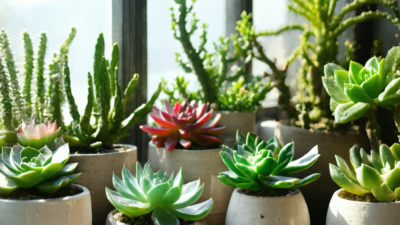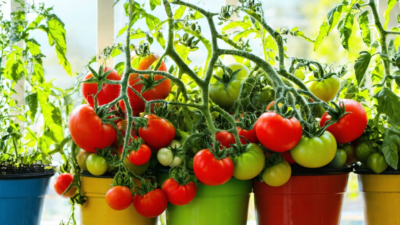Transforming Skyscrapers into Green Oases: The Rise of Vertical Gardening
In the heart of bustling cities, where concrete jungles dominate the skyline, a quiet revolution is taking root. Vertical gardening, once considered a niche hobby, has evolved into a practical solution for urbanites seeking fresh produce and a connection with nature. This innovative approach to farming not only beautifies our surroundings but also addresses critical issues like food security and environmental sustainability.
What is Vertical Gardening?
Vertical gardening involves growing plants in vertically stacked layers, often utilizing walls, trellises, or specially designed structures. Unlike traditional horizontal farming, this method maximizes space efficiency, making it ideal for urban areas where land is scarce. Whether you’re cultivating herbs on a balcony or installing green walls on high-rise buildings, vertical gardening offers endless possibilities.
The Benefits of Vertical Gardening in Urban Environments
Urban spaces present unique challenges when it comes to gardening, but vertical solutions provide a host of advantages:
- Space Efficiency: Perfect for small apartments or rooftop gardens where horizontal space is limited.
- Improved Air Quality: Plants act as natural air purifiers, removing pollutants and releasing oxygen.
- Food Security: Grow your own vegetables and herbs, reducing reliance on external suppliers.
- Energy Savings: Green walls can insulate buildings, lowering heating and cooling costs.
- Aesthetic Appeal: Transform dull facades into vibrant green canvases that uplift urban landscapes.
Designing Your Urban Vertical Garden
Creating a successful vertical garden requires careful planning. Consider the following tips to maximize your setup:
- Select the Right Plants: Choose plants that thrive in limited soil and light conditions, such as leafy greens, herbs, and certain vegetables.
- Optimize Lighting: Position your garden to receive maximum sunlight or supplement with grow lights if necessary.
- Incorporate Hydroponics: Use soilless growing systems to conserve water and nutrients while ensuring optimal plant health.
- Invest in Durable Structures: Choose materials that can withstand the elements and support the weight of your garden over time.
Innovative Applications of Vertical Gardening
Beyond residential use, vertical gardening is making waves in commercial and public spaces. From green walls adorning office buildings to urban farms supplying local markets, the applications are vast:
Public Parks and Plazas: Integrate vertical gardens into public spaces to create welcoming, eco-friendly environments.
Rooftop Farms: Transform unused rooftops into productive agricultural spaces, providing fresh produce for urban communities.
Maintenance Tips for Urban Vertical Gardens
To keep your vertical garden thriving, follow these maintenance guidelines:
- Watering: Ensure consistent moisture without overwatering. Use drip irrigation systems for efficiency.
- Fertilization: Feed your plants with organic or slow-release fertilizers to maintain healthy growth.
- Pest Control: Monitor for pests and address issues promptly using natural methods like companion planting or insecticidal soap.
- Pruning: Regularly trim back overgrown plants to maintain balance and encourage new growth.
The Future of Urban Farming: Challenges and Opportunities
As urban populations continue to grow, so does the demand for sustainable food systems. Vertical gardening offers a promising solution, but challenges remain:
- Initial Investment Costs: While long-term savings are significant, setting up a vertical garden can require upfront expenses.
- Maintenance and Expertise: Success depends on ongoing care and knowledge of gardening techniques.
Opportunities for Expansion: Governments, businesses, and community organizations are increasingly recognizing the benefits of vertical gardening. Collaborative efforts can help scale these initiatives, making them accessible to more people.
Embracing a Greener Future
The rise of vertical gardening in urban spaces is not just a trend—it’s a necessary evolution for sustainable living. By harnessing innovative techniques and embracing the potential of green walls and rooftop farms, we can create cities that are as vibrant and life-sustaining as they are visually stunning.
Whether you’re a seasoned gardener or a newcomer to urban farming, there has never been a better time to explore the world of vertical gardening. Join the movement and contribute to a healthier, greener future—one plant at a time.





